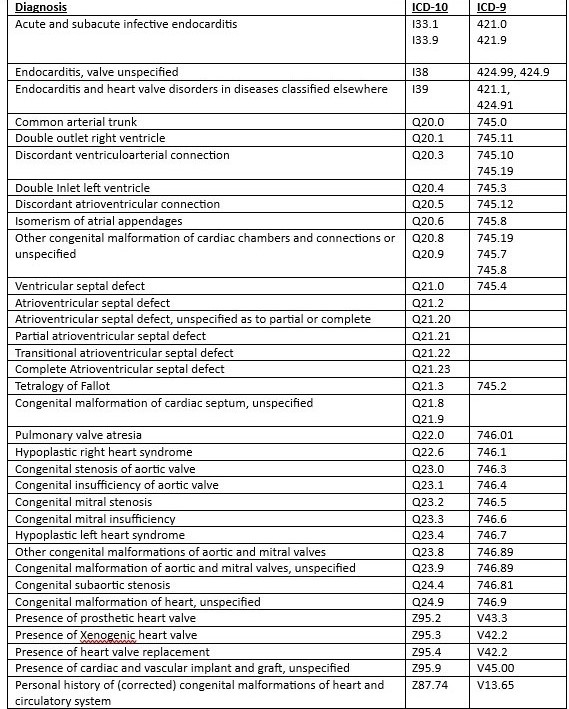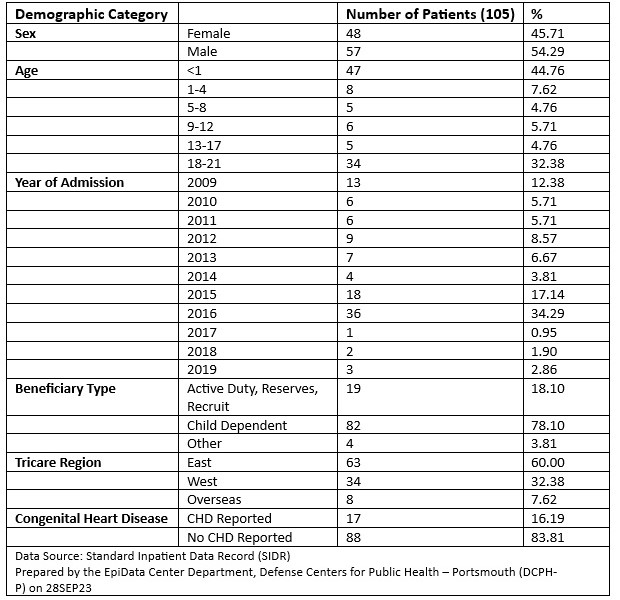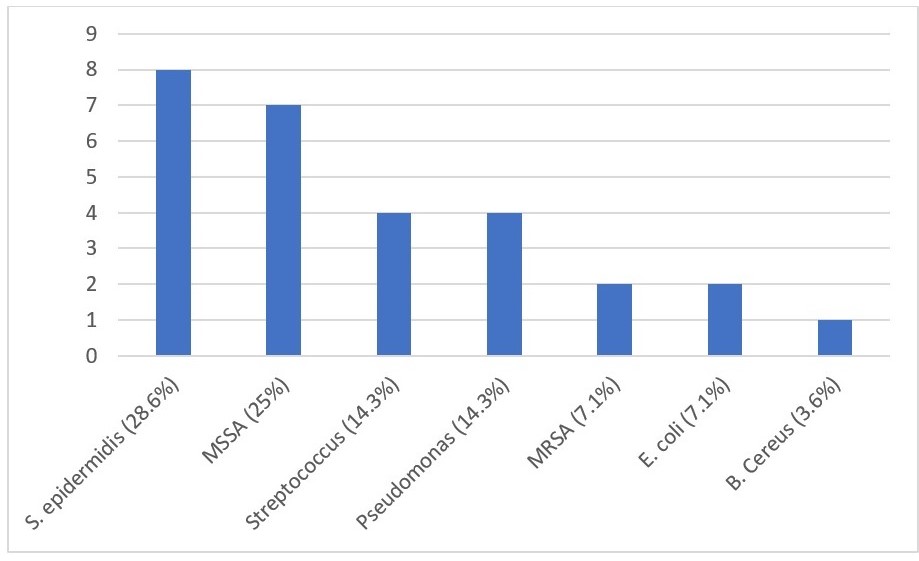Infectious Diseases
Session: Infectious Diseases 2
75 - The Unique Microbiology and Epidemiology of Pediatric Infective Endocarditis
Saturday, May 4, 2024
3:30 PM - 6:00 PM ET
Poster Number: 75
Publication Number: 75.1554
Publication Number: 75.1554

John B. Favorite, MD (he/him/his)
Pediatrics Resident
Naval Medical Center, Portsmouth
Norfolk, Virginia, United States
Presenting Author(s)
Background: Pediatric infective endocarditis (IE) is a rare, highly morbid infection with complex diagnostic criteria that combine clinical suspicion with microbiologic and radiographic data. IE in the pediatric population is overall understudied, with many recommendations coming from generalizations of adult studies, despite pediatric patients often having different presentations, common pathogens, and risk factors.
Objective: We aimed to better characterize the population at risk and update the microbiology of pediatric IE using the large and diverse U.S. Military Health System database.
Design/Methods: Department of Defense beneficiaries less than 22 years-of-age admitted to a military treatment facility with an ICD-9/10 code for IE (Table 1) between October 2008 and September 2019 were included. Congenital heart disease (CHD) was also identified using ICD-9/10 codes (Table 1). Demographic data including age, sex, geographic region, and year of admission were collected for each patient. Microbiologic culture data were also collected for each patient.
Results: 105 patients with IE were identified over the 11-year study period. IE cases were clustered among those less than 1 year of age and 18-21 years of age (Table 2). Seventeen (16.2%) of patients had underlying CHD, with ventricular septal defect (41.2%), tetralogy of Fallot (29.4%), and aortic and mitral valve defects (11.8%) being the most common types of CHD identified. Only 28 (26.7%) IE patients had positive blood cultures: 8 (28.6%) Staphylococcus epidermidis, 7 (25%) methicillin-sensitive Staphylococcus aureus, 4 (14.3%) Streptococcal species, 4 (14.3%) Pseudomonas, 2 (7.1%) methicillin-resistant Staphylococcus aureus, 2 (7.1%) Escherichia coli, and 1 (3.6%) Bacillus cereus (Figure 1).
Conclusion(s): Only 17/105 (16.2%) of pediatric patients with ICD9/10 codes for IE met major Duke clinical criteria for multiple blood cultures positive with typical IE organisms. Seventeen (16.2%) met minor Duke criteria for a predisposing heart condition and another 5 (4.8%) patients met minor Duke criteria for an isolated positive blood culture, or culture with non-typical organisms. Pediatric IE is mostly caused by typical IE pathogens such as Staphylococcus aureus, coagulase-negative Staphylococcus, and Streptococcal species; however, we found that gram-negative pathogens such as E. coli and Pseudomonas are not an uncommon cause of IE in children. Next steps include correlation of echocardiographic data for these patients to further refine the cohort and determine the most common intracardiac findings in pediatric IE.



